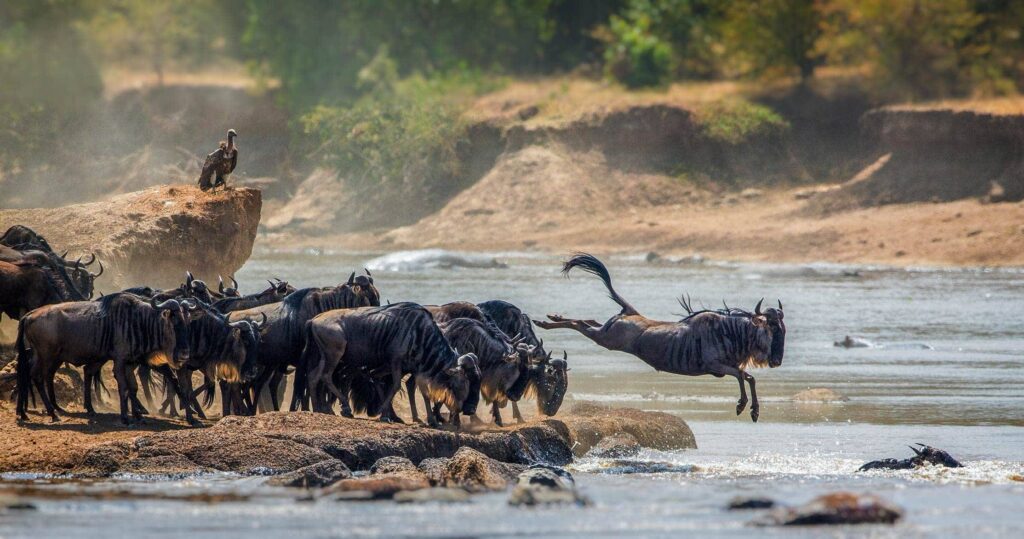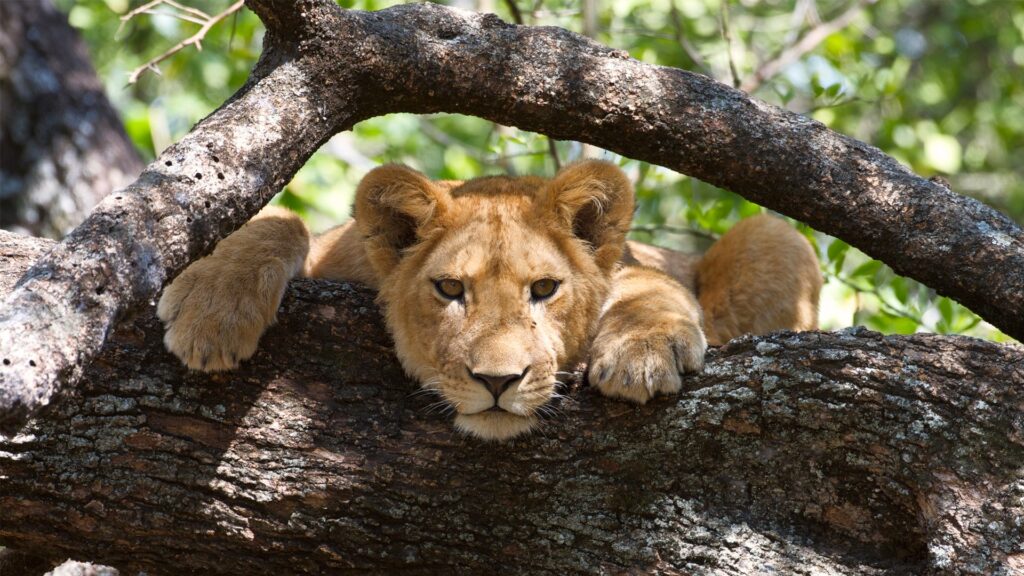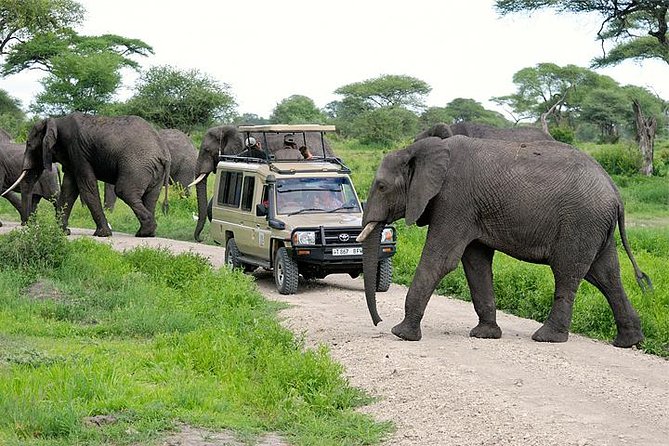The Serengeti National Park is without a doubt the world’s most famous wildlife sanctuary, unrivaled for its natural beauty and scientific importance, and it contains Africa’s highest concentration of plains game. It is part of the northern Tanzania safari circuit and is located in the Mara region near Mwanza city, bordering the Ngorongoro conservation area and the Maasai Mara game reserve in Kenya. It was founded in 1952 and encompasses a total area of 14,763 square kilometers. It is home to the world’s largest wildlife spectacle: the great migration of wildebeest and zebra. The resident lion, cheetah, elephant, giraffe, and bird populations are also outstanding.
The Serengeti National Park, also known as the Endless Plain, is a UNESCO World Heritage Site and one of the parks in the world that provides the best views of wild animals due to its wide grassland environment and plain landscape, which makes it excellent for watching and seeing animals from far. There are about 2 million ungulates in the Serengeti National Park, as well as 4000 lions, 1000 leopards, 550 cheetahs, and 500 bird species.
THE PARK’S HISTORY
The area was designated as a protected area in 1940, and the National Park was established in 1951, incorporating the southern Serengeti and the Ngorongoro highlands.
The government restricted the movements of the resident Maasai people because the park was hosting local people at the time, particularly the Maasai, and the park boundary were formalized in 1951. In 1959, an area of 8,300 km2 (3,200 sq. mi) in the eastern half of the national park was cut off and re-established as the Ngorongoro Conservation Region, with the goal of accommodating the Maasai people’s traditional land use interests in a multiple-land-use area. The Serengeti National Park spanned 12,950 km2 (5,000 sq. mi) in 1981, which was less than half of the total area of the Serengeti.
THE SERENGETI NATIONAL PARK ENTRACE FEES AND OTHER COSTS
This is another important thing to consider when planning a visit to the Serengeti national park. However, keep in mind that the cost of the Serengeti national park differs depending on the season. In high season, the Serengeti national park becomes more expensive compared to the low season. The cost for Serengeti National Park covers different aspects and elements, such as the conservational fees, the accommodation fees, the transport fees, the tourism activity fees, and above these, you should also include the government VAT, which is 18%.
The entrance fee for non-east Africa citizens with the ages above 16 years during the peak season is U$ 70 while the age between 5 and 15 years is U$ 20.
The entrance fees for the non-east Africa citizen with the age above 16 years old during the low season is U$ 60 while the age between 5 to 15 years old is U$ 20
WHEN IS THE BEST TIME TO VISIT SERENGETI NATIONAL PARK?
The wet season and the dry season are the two primary seasons in the Serengeti National Park, with the dry season being the best time to visit and the tourist peak season.
The best months to visit Serengeti National Park are January to February or June to September, which are the dry seasons, yet anyone hoping to observe the great wildebeest migration should schedule their trip around the migration’s movements. Winter, for example, is the greatest time to witness a herd of wildebeest in the Southern Serengeti, while January and February are the ideal months to see wildebeest giving birth in the Serengeti’s Ndutu area.
Apart from observing a higher concentration of animals from June to September, the roads are also more pleasant and accessible, the habitats are short, and the Serengeti Plain is more rewarding for viewing even faraway animals. However, keep in mind that this is not the best time for a budget safari because this is Tanzania’s peak tourism season, and most lodgings are pricey owing to strong demand. The greatest time to visit the Serengeti National Park on a budget is during the low season, particularly during wet or rainy periods, when lodgings are inexpensive and most offer discounts.
HOW TO GET THERE
Kilimanjaro International Airport, located between the towns of Moshi and Arusha, is the suggested point of entry to Serengeti national park. Kilimanjaro International Airport is roughly 200 miles (320 kilometers) from the park’s southern gate. It also has daily connections with Nairobi Jomo Kenyatta international airport in Kenya, which provides more international flight options. Additional airlines, including British Airways, Emirates, and others, fly into Tanzania’s capital, Dar es Salaam, from where you can catch a local flight to Kilimanjaro or Arusha airport.
When you have arrived in Kilimanjaro international airport/ Arusha You can take a domestic aircraft direct from Kilimanjaro International Airport or Arusha Airport to Serengeti National Park, or you can take a car trip from Arusha to Serengeti National Park, which takes around 5 to 6 hours and passes through the Ngorongoro Conservation Area.
WHAT TO SEE IN SERENGETI NATIONAL PARK/ TOURIST ATTRACTIONS
The Serengeti National park in Tanzania is home to a variety of tourist attractions that visitors can enjoy while visiting this wonderful park. The park is home to a wide range of wild creatures, including wildlife, plants, and many bird species. The following are some of the Serengeti National Park’s tourist attractions.
- The park’s wildlife, includes enormous herds of wildebeest, zebras, buffalo, gazelles, lions, hyenas, and wild dogs, among others.
- The Serengeti plains, are a land scape that runs throughout Serengeti National Park and provides an incredible view of the park’s various wild species.
- Kopjes, in particular, are well-known. Moru kopjes are another physical feature present in the park, and they are the best areas to see lions because they are usually up viewing prey to hunt.
- The Olduvai Gorge is also regarded as the “cradle of mankind” since it is where the Leakey family discovered the first human remains.
- For bird enthusiasts, the Serengeti National Park is a wonderful site where they may observe a variety of bird species, from resident to migratory.
- Another attraction in the Serengeti national park is the moving sand, which is found in the Ndutu area, where wildebeest give birth. You’ll be able to witness how a larger bunch of sand moves from one location to another over the course of a year, traversing only a few kilometers.
THINGS TO DO IN SERENGETI NATIONAL PARK/ TOURIST ACTIVITIES
Guided nature walks
Nature walks are a great opportunity to see the Serengeti in a way that you wouldn’t be able to see on a typical game drive. They allow you to get up close and personal with the Serengeti’s natural beauty while also allowing you to spot reptiles, birds, insects, and other unique plants. To protect you from dangerous animals, you will be guided by an armed ranger who is familiar with the terrain and knowledgeable about the park’s various species.
Hot Air Balloon Safari
Another fantastic but pricey activity in the Serengeti national park is aerial viewing. It is highly recommended as a tourist activity since you will be able to see a larger number of wild animals even from afar in aerial view.
From thousands of feet above the earth in the Serengeti, you’ll get an overhead perspective of the grasslands and the animals that wander them. During the wildebeest migration, hot air balloon safaris are especially popular, allowing visitors to see tens of thousands of them. In the African wilderness, hot air balloon safaris begin in the morning and culminate with a champagne breakfast.
Bush meals
If you’re traveling with a partner or family, or if you’re planning a honeymoon safari in the Serengeti, you can opt for a bush meal, where you’ll find having dinner in the center of the African wilderness to be an unforgettable experience.
Visiting the Olduvai Gorge
The Olduvai Gorge is also regarded as the “cradle of mankind” since it is where the Leakey family discovered the first human remains. The Gorge is located within the East African Rift Valley and is part of the adjacent Ngorongoro Conservation Area. The Leakey family established a research base there, where they uncovered some 2 million-year-old fossils and artefacts.
Viewing the Wildebeest Migration
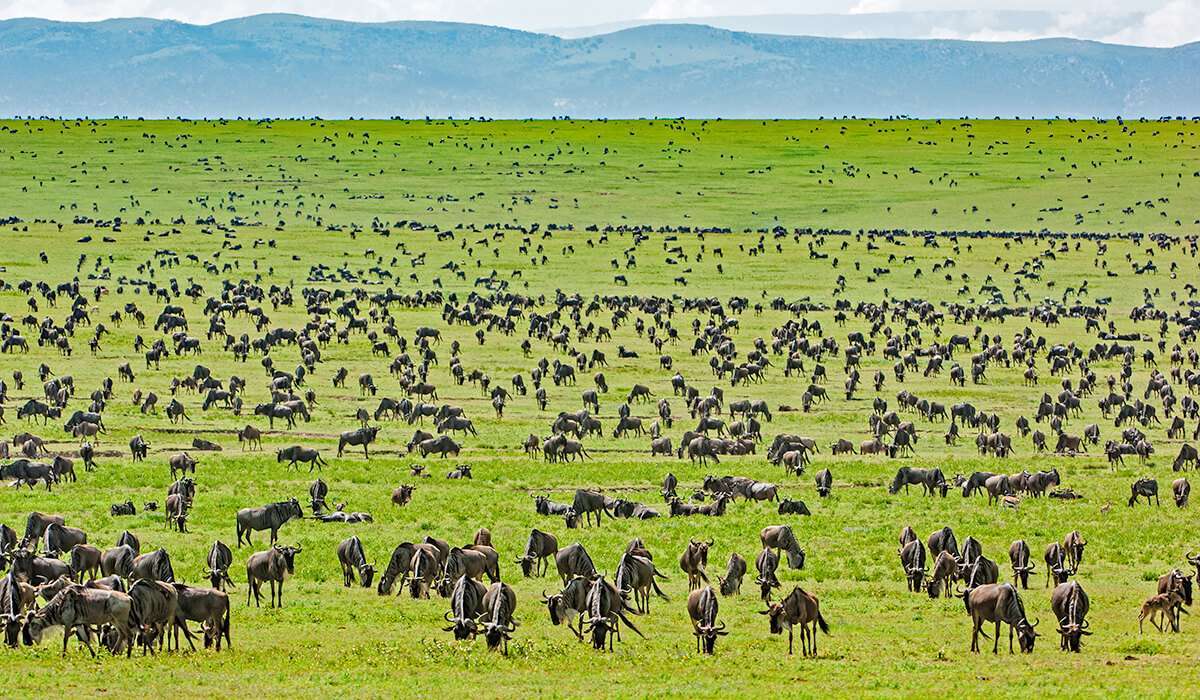
Every year, more than 1.6 million zebras, gazelles, and wildebeest cross the Serengeti National Park and the Maasai Mara National Reserve. Crossing the Mara River on their way to Kenya is one of their most difficult tasks. They must traverse a crocodile-infested river and contend with a strong current. This is also the time of year when you can see a lot of predators like lions and hyenas hunting in these locations.
Bird watching, day and night game drives, visiting the surrounding Maasai culture, photographing and filming are just a few of the other tourist activities or things to do in Serengeti National Park.
WHERE TO STAY IN SERENGETI NATIONAL PARK/ ACCOMMODATIONS
The Serengeti national park, as one of Africa’s and the world’s most popular wildlife, offers a wide range of accommodations, including campsites (public, private, special, seasonal, and mobile campsites). In addition to campsites, the Serengeti national park also hosts a large number of lodges, ranging from budget lodges to mid-range to luxury lodges, allowing all visitors, from budget to luxury, to access and stay in the Serengeti national park. The following are some of the most highly regarded Serengeti lodging options.
- Melia Serengeti lodges
- Mbalageti Serengeti
- Zawadi Serengeti camp
- Mawe luxury tented camp
- Ole serai luxury camp.
- Serengeti safari lodge
- Africa safari Maasai boma
- Kirawira Serena camp.
- Serengeti sound of silence
- Serengeti river camp
- Grumeti migration camp.
- Serengeti wildebeest camp
